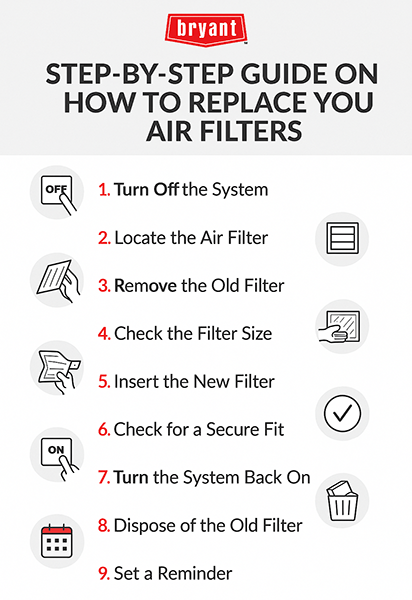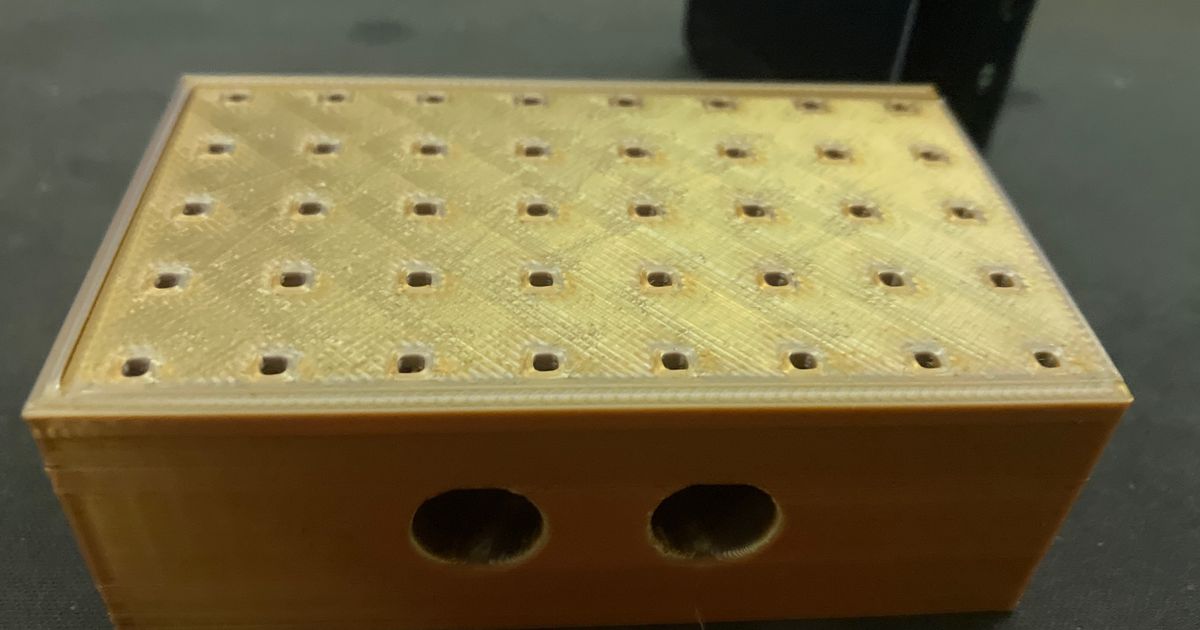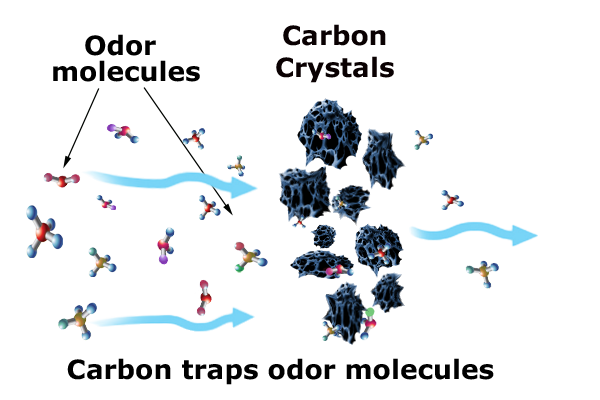
Nobody likes a smelly car. It’s unpleasant to sit in your car and smell a bad aroma, and you may feel embarrassed if you’re giving friends a ride. Whether it’s the ghost of last week’s takeout, a musty smell from the AC, or a mysterious funk you just can’t pinpoint, you need a reliable solution. The common mistake is simply masking the scent with an air freshener, which only provides a temporary, and often cloying, fix.
Car odors can emerge randomly and from a variety of sources. For example, during a rainy week when you’re tracking in water, you might notice a mildew smell on the carpet. Other times the pungent odor of a forgotten McDonald’s bag can emerge, especially if you have kids or eat in your car often. But don’t worry! In most cases, it’s relatively simple to remove a bad smell from your car by following a systematic process.
To truly and permanently get rid of a bad smell in your car, you must follow a systematic process: first, locate and remove the physical source of the odor. Next, perform a deep cleaning of all interior surfaces. Then, use a proven deodorizing agent to neutralize residual smells. Finally, adopt simple maintenance habits to prevent odors from ever returning. This guide provides the definitive, step-by-step method to reclaim your car’s freshness.

1. Remove All Trash and Debris (The First Line of Defense)
The first and most critical step is to thoroughly inspect the car’s interior—under seats, in crevices, and the trunk—to find and remove the physical source of the smell, such as old food or hidden trash. Before you can even think about cleaning or deodorizing, you have to play detective. Covering up a smell is a temporary fix; removing its cause is the permanent solution. This is the single most important step in the entire process, as advised by professional detailers and automotive care experts. Industry analysis consistently shows that nearly all persistent odor problems stem from a physical source, like spilled food or hidden moisture. Simply cleaning without removing the source is ineffective.
Always start with the obvious— trash, soda bottles, cups with liquid in them, or fast food bags. Start with the basics by clearing everything out of the car and removing all trash. There may be an old piece of food or other garbage stinking up your car. Check under the seats and remove all rotting food, trash, and junk items. Check back pockets and remove all trash items. Be careful if you have children as there may be sticky candies, or unidentified blobs of food stuck within the pocket. Don’t forget to clean the back or trunk of the car as well.
Arm yourself with a trash bag and a pair of gloves, and meticulously check common hiding spots for odor-causing culprits. These include under the seats, between the seats and center console, seatback pockets, door compartments, and cup holders. Look for any forgotten groceries, damp gym clothes, or spills in the trunk, especially in the spare tire well where moisture can collect. Spills can seep through the mats and fester on the carpet beneath, so remember to check under the floor mats as well. A helpful pro tip is to “Use your phone’s flashlight to get a clear view of hard-to-reach spots like under the front seats and in the trunk’s spare tire well. You might be surprised by what’s been hiding in the dark.”
Often when trapped food heats up it gives off a bad smell so look carefully for crumbs or decaying food. Once loose trash is removed, vacuum everything up. Be sure to wipe up any dried food like ketchup with a microfiber towel and interior detailing spray. A crevice tool attached to your vacuum can be helpful here to reach in between seats. A car trash can is a great idea for drink bottles, wrappers, and everything else so long as you remove and empty it daily.

2. Tackle Smoke Odors with Vinegar-Water Wipes
The pervasive smell of cigarette smoke is one of the most stubborn odors to remove from a car’s interior. Smoke tends to work its way into every surface of a vehicle, embedding itself in fabrics, plastics, and even glass. Simply airing out the car or using an air freshener will not be enough to truly eliminate this deeply ingrained scent. A more aggressive, yet simple, approach is required to break down the smoke and tar residue.
To effectively combat cigarette smoke, you need to “Wipe interior surfaces with water and vinegar to remove cigarette smell.” Begin by mixing a 1:1 mixture of white vinegar and water in a large bowl. White vinegar is a proven deodorizer. The acidic nature of vinegar works to neutralize alkaline odor molecules, as supported by numerous car care guides. This solution is particularly effective at cutting through the sticky residue left behind by smoke.
Wet a clean rag in the vinegar and water mixture, ensuring it’s damp but not dripping wet. Use this rag to meticulously “wipe residue from smoke and tar off of the car’s interior surfaces.” This includes the dashboard, door panels, steering wheel, console, and any hard plastic or vinyl areas. You’ll likely see a yellowish-brown residue on your rag, which is the tar and nicotine being lifted away. Repeat this process with fresh rags and solution until the surfaces are clean.
Since smoke also permeates the car’s ventilation system, you “may also need to spray a deodorizing spray into the car’s vents and air intake.” This helps to address any odors trapped within the air ducts that circulate the smell whenever the fan is on. However, for a lasting solution, if you or somebody else regularly smokes in the car, “the odor will always be present, so the best thing to do is to stop smoking in the car.” This fundamental change is crucial for permanent smoke odor removal.
Read more about: Unlock a Showroom Shine: Drivers’ Top Car Cleaning Hacks That Will Transform Your Ride and Save You Money

3. Eliminate Mildew and Mold from Moisture
A persistent damp or musty smell in your car is almost always a clear indicator of moisture, which inevitably leads to mildew or mold growth. This unpleasant aroma often signals hidden water accumulation, turning your car’s interior into a breeding ground for these fungi. Finding and fixing the source of the water ingress is essential. If your car smells like a damp basement even after a deep clean, you have a moisture problem. Feel the carpets, especially under the floor mats, as any dampness is a red flag that needs immediate attention.
To remove existing mildew or mold, the immediate step is to “vacuuming out any moisture” from your car’s upholstery or carpets. A wet-dry vac is the ideal tool for this, as it can efficiently extract liquids from fabric and carpet fibers. Thoroughly go over all damp areas, ensuring you remove as much moisture as possible. After vacuuming, it’s crucial to let the car’s interior fully dry out. “Leave the windows open for 8-10 hours to allow the car’s interior to fully dry out.” If you cleaned removable rugs or mats, “let them dry in the sun to kill mold and mildew.” Sunlight is a natural disinfectant and helps to eradicate these spores. Once the interior is dry, the mildew smell should be gone.
Preventing future mildew is just as important as removing current growth. “Prevent future mildew in your vehicle by checking for any leaks in your car.” You can easily “check for leaks by parking your car over a sheet of clean cardboard overnight.” If you find any wet spots on the cardboard, it indicates a leak that needs attention. “If you find that your car has leaks, take it to a mechanic for repair.” This proactive step can save you from recurring moisture problems and the associated musty odors.
Beyond structural leaks, common culprits for mildew and mold include spills or wet gear left inside the car. If leaks aren’t an issue, the mildew or mold may have occurred because of a spilled drink or wet gear being placed in the car and left there. “Remove any contaminants such as rotting food and clean the area of the car with an all-purpose cleaner or shampoo.” For a damp smell often caused by mildew, a community answer suggests, “You should try a chlorine dioxide-based product to destroy the mildew spores and eliminate the smell.” These specialized products offer a deeper fix for challenging mildew issues.
Read more about: 13 Crucial Household Items You Should Be Cleaning Every Single Day for a Healthier Home

4. Neutralize Vomit Stains Immediately
Vomit is one of the most challenging and immediate odor sources to deal with in a car’s interior. The pungent, sour smell is not only unpleasant but the acidic nature of vomit can cause lasting damage to upholstery and carpet fibers if not addressed swiftly. Vomit is an odor source that should be cleaned up immediately, because the stomach acids in vomit cling to the fiber and can damage it. Speed is of the essence when confronted with this particular mess.
To effectively clean out vomit, you’ll need to scrub the stains with a specific solution. “Mix vinegar and water at a 1:1 ratio in a large bucket.” This combination harnesses the neutralizing power of vinegar to break down the acids and associated odors in the vomit. Dip a rag into the mixture and begin to “scrub at the vomit stain.” It’s important to work diligently over the stain, making sure to lift all the solid and liquid residue from the surface it’s on. Keep working over the stain until you’ve removed it from the surface it’s on.
Once you’ve physically scrubbed away all the residual vomit, the cleaning process isn’t over. You need to extract the cleaning solution and any remaining moisture. “Once you’ve scrubbed all of the residual vomit out of the carpet, use a wet-dry vac to pull all of the remaining water and vinegar out of the carpet.” This step is crucial to prevent new odors from forming as the carpet dries, ensuring that both the vomit and the cleaning solution are completely removed. Proper extraction also prevents the growth of new mold or mildew due to lingering dampness.

5. Address Urine Stains with Targeted Cleaners
Similar to vomit, urine introduces a strong and incredibly persistent odor to a car’s interior that requires immediate and targeted action. Urine has a strong odor and should be removed from the car as soon as possible. The challenge with urine is that it can penetrate deeply into fabric fibers, and if not treated correctly, the smell can become permanent, especially if heat is applied during the cleaning process.
To tackle urine stains, a specialized approach is necessary. “Visit an auto shop and buy a stain remover that is suitable for car upholstery or carpet.” These products are formulated to break down the components in urine that cause odor and staining, without harming your car’s interior materials. When applying the cleaner, it’s vital to “blot the stain remover onto the car upholstery or carpet rather than rubbing it in.” Rubbing can push the urine deeper into the fibers, making the problem worse. “Let the stain remover sit for the time suggested by the packaging” to allow it to work its magic.
After the recommended sitting time, allow the treated area to air-dry naturally. A critical warning to heed is that “If you use a hot dryer source (like a hair dryer), the urine may adhere to the carpet and start to smell very bad.” Heat can actually set the stain and odor, making it much harder, if not impossible, to remove. Patience during the drying process is key for successful urine odor elimination.
If the initial stain remover doesn’t completely resolve the issue, you have an alternative option. “If this doesn’t work, you could try using a pet urine odor removing spray.” These sprays are specifically designed with enzymes that break down urine at a molecular level, effectively neutralizing the odor rather than just masking it. You can purchase this product at most pet stores. For challenging stains in hard-to-clean areas like a cream-colored SUV trunk, an expert suggests, “Sprinkling the stain with baking soda shouldn’t change the color. If you do use an all-purpose cleaner, make sure to use a clear one. Most rug shampoos won’t harm the cream color, either,” offering a gentle yet effective solution.

6. Deep Clean and Shampoo Carpets and Upholstery
Even after removing immediate odor sources and addressing specific stains, a general, lingering unpleasantness can often stem from grime and microscopic particles embedded deep within your car’s carpets and upholstery. Sometimes odors form over time when liquids, grease, and organic material dry and build up inside seat fabric and carpet fibers. This accumulated dirt and debris, often invisible to the eye, acts as a continuous source of bad smells, especially when the car heats up. Therefore, a thorough deep clean is indispensable for truly detoxing your car’s interior.
Start by systematically removing and cleaning your floor mats. In most cars, the floor mats (where the driver’s and passengers’ feet rest) can be removed. Pull these out, and use a few rags and hot, soapy water to clean them. Stains may have accumulated over time, which may be producing the foul smell in your car. Ensure you “Use clean water when you’re cleaning off the floor mats. Wipe off all excess water from the mats so no water pools up in the car once you put the mats back in.”
Once the mats are out, it’s time for comprehensive vacuuming. “Vacuum the car to clear out any grime worked into the carpet.” Vacuum the carpet and the seats to remove excess dirt. Besides dirt, food crumbs or leftover bits of trash may have been worked into the carpet. Vacuuming these out should improve the smell of your car. “Run the vacuum nozzle over all seat and floor surfaces.” For particularly stubborn carpet odors, “If you’re sure that the car’s carpet is the problem, you could sprinkle carpet deodorizer over the carpet. Leave it to sit for the time recommended on the package instructions (usually about 5-10 minutes) before vacuuming it up.”
If vacuuming alone isn’t enough, a more aggressive approach is needed. “Shampoo the inside of the car if vacuuming didn’t remove the smell.” Purchase a car shampoo from your local car store and use a clean sponge for scrubbing. “Mix the car shampoo with water as the package directions suggest. Scrub the shampoo deep into the car upholstery and carpet to release the dirt trapped inside the fabric folds.” Work the shampoo deep into any existing carpet or seat stains, as “Stains may be a source of odor, so removing them is crucial.” When purchasing a car shampoo, “select one that is designed to treat the type of materials used in your car.”
After shampooing, the crucial next step is rinsing and drying. “Once you’ve finished scrubbing the car’s interior, you’ll need to rinse out the shampoo and let the interior carpets and seats dry.” Proper drying is paramount to prevent new mildew or damp smells from forming. Ensure adequate ventilation by keeping windows open or using a fan. This comprehensive deep cleaning process extracts trapped odors, leaving your car’s fabric surfaces genuinely fresh.
Building on the essential initial cleanup, this section now guides you through the deeper, often-overlooked aspects of car interior detoxification. We’ll delve into areas that frequently harbor hidden smells, such as your ventilation system and seatbelts, before exploring powerful deodorizing agents that neutralize lingering molecules. Finally, we’ll equip you with the knowledge to recognize when a professional’s touch is needed to achieve that permanently odor-free vehicle.
Read more about: You Won’t Believe How Gross These 14 Common Household Items Actually Are: Your Ultimate Germ Hotspot Guide!

7. Clean Out the Cabin Air Filter
A frequently overlooked culprit for persistent and musty odors emanating from your car’s vents is the cabin air filter. Contaminants like pollen, dust, and even mold spores can get caught in this filter, creating a breeding ground for unpleasant smells every time you run your air conditioning or heating. The AC system is a frequent culprit; a musty or mildew smell that appears when the fan is turned on is a classic sign of a dirty cabin air filter or moisture buildup in the AC system, a common issue often overlooked by car owners.
Locating your cabin air filter is the first step. In many modern vehicles, it’s conveniently situated behind the glove box, under the passenger-side dashboard, or sometimes even under your hood. If you’re having trouble pinpointing its exact location, don’t hesitate to consult your vehicle’s manual—it’s a treasure trove of specific information. Once you’ve found it, carefully remove the pleated air filter from its housing.
Upon inspection, you’ll likely notice if the filter is dark, clogged with debris, or damp. If it appears dark and caked with debris, it’s definitely time for a cleaning or even replacement. You can try to clean it by hitting the filter a few times with a soft brush or spraying it with an air gun to dislodge contaminants before you reinstall it. However, if the filter is significantly soiled or damp, replacing it is often the best course of action for lasting freshness.
For those stubborn musty smells specifically originating from the vents, beyond just the filter, you might consider flushing out your A/C lines. A quick tip suggests that if you turn off your car with the A/C running, condensed water can drip and settle in your A/C lines, causing a musty smell over time. Periodically cleansing A/C lines with a product like Fridgi-Fresh, designed to be sprayed into your vehicle’s outside air intake vent, can help rid this particular odor.
Read more about: Read This First: 14 Popular Trucks and SUVs That Become Costly Money Pits Once They Hit 80,000 Miles

8. Address Often-Overlooked Areas: Seatbelts and Headliners
After tackling the main surfaces, it’s time to zero in on areas that often go unnoticed during a routine clean but can harbor significant odors: your seatbelts and headliner. Since areas like seatbelts are hardly ever cleaned, they often trap odors from spills, sweat, and general grime that accumulate over time. These seemingly minor spots can contribute a surprisingly strong, lingering funk to your car’s overall scent profile.
Cleaning seatbelts requires a gentle yet effective approach. We recommend applying pressurized steam with a device like the Tornador to clean these, or using a fabric-safe cleaner. Extend the seatbelt fully and use a microfiber towel dampened with your chosen cleaner to meticulously wipe down both sides. You’ll be surprised by the amount of dirt and residue that comes off. Be sure to allow them to air dry completely before retracting to prevent any new mildew growth.
The headliner, or ceiling fabric, is another delicate area that can absorb odors, especially in cars where smoking has occurred. For headliners, always agitate cleaner gently to avoid damaging the fabric. A headliner typically won’t be the main source of odor unless the car has been smoked in. In the case of a smoky-smelling vehicle, extraction using steam or water is key — from top to bottom.
When cleaning the headliner, it’s crucial to avoid over-saturating the fabric, as this can lead to sagging or water stains. Use a very lightly dampened cloth with a gentle fabric cleaner or a specialized headliner cleaner, blotting rather than scrubbing vigorously. Work in small sections and allow each area to dry thoroughly before moving on. This careful attention to detail ensures you capture all hidden odors without damaging your car’s interior.

9. Sprinkle Baking Soda to Absorb Residual Odors
Once you’ve physically cleaned and shampooed the major surfaces, you might still detect faint, lingering odors. This is where the power of baking soda comes in as a fantastic natural deodorizer. Baking soda absorbs unpleasant odors, working by actively neutralizing acidic and alkaline odor molecules, rather than simply masking them. It’s particularly effective for general mustiness or remnants of food smells embedded in fabrics.
To utilize this simple yet powerful method, buy a box of baking soda at your local grocery store. Use your fingers to sprinkle a pinch of the powder lightly and evenly over any smelly stains or general areas on your car’s carpets and cloth seats. Don’t go overboard; a light dusting is sufficient. The porous nature of baking soda allows it to draw out and trap microscopic odor-causing particles from the fabric fibers.
After sprinkling, let the baking soda sit for a recommended period, typically 4-5 hours, to give it ample time to absorb the odors. For tougher smells, you can even leave it overnight. Once the waiting period is over, use a regular household vacuum cleaner to thoroughly vacuum up all the baking soda. It’s crucial to only sprinkle baking soda onto dry surfaces, as the context warns: “If you sprinkle it onto a wet stain, the powder will form a tough-to-remove paste,” making it much harder to remove.
For those with light-colored interiors, like a cream-colored SUV trunk, an expert suggests, “Sprinkling the stain with baking soda shouldn’t change the color. If you do use an all-purpose cleaner, make sure to use a clear one. Most rug shampoos won’t harm the cream color, either,” providing reassurance that this method is safe and effective without causing discoloration.
Read more about: Unlock Years of Flavor: Your Definitive Guide to Restoring Any Cast Iron Pan to Pristine Condition

10. Utilize Activated Charcoal and Other Natural Deodorizers
Beyond baking soda, activated charcoal stands out as another highly effective natural deodorizing agent, known for its ability to actively trap and absorb odor-causing molecules. Unlike air fresheners that just mask smells, activated charcoal’s highly porous structure actively traps and absorbs odor-causing molecules and moisture from the air, making it a powerful natural deodorizer. This makes it an excellent choice for persistent musty smells or general ambient odors.
To use activated charcoal, simply place it in a shallow bowl or utilize specially designed charcoal bags. You can position these on the floor, dashboard, or even under the seats. For best results, leave the activated charcoal in your car overnight, or even on an ongoing basis for continuous odor and moisture control. It’s particularly useful after a deep clean, as it helps to capture any remaining airborne odors that might still be circulating.
If you’re looking for another quick overnight fix with common household items, dry coffee grounds can also be surprisingly effective. Leave an open container of dry grounds in a cup holder or on the floor overnight. The rich aroma of coffee grounds is known to absorb and neutralize a variety of smells, leaving behind a more pleasant, albeit temporary, scent in your vehicle.
To remove any remaining moisture, especially after cleaning or if your car has been exposed to dampness, a product called DampRid is highly recommended. DampRid is specifically designed to absorb excess moisture from the air, which is a common cause of musty smells. The product visibly collects the moisture, giving you tangible proof of its effectiveness and helping to prevent future mildew issues.
Read more about: The Definitive Guide to Restoring Your Car’s New-Car Scent: A Consumer Reports Deep Dive

11. Employ Chemical Eliminators for Deeper Odor Removal
For severe and deeply embedded odors that persist even after extensive cleaning and natural deodorization, chemical eliminators offer a more powerful and targeted solution. These are not merely air fresheners designed to mask smells; instead, they work at a molecular level to neutralize the odor-causing compounds. For severe odors like smoke, products containing chlorine dioxide are scientifically proven to eliminate smells at a molecular level, rather than just covering them up.
Chlorine dioxide-based products are particularly potent against stubborn odors such as heavy cigarette smoke, severe mildew, or the remnants of chemical spills. These specialized formulas break down the odor molecules, effectively destroying the source of the bad smell. For a damp smell often caused by mildew, a community answer suggests, “You should try a chlorine dioxide-based product to destroy the mildew spores and eliminate the smell,” highlighting its specific efficacy.
When using chemical eliminators, follow the product instructions carefully. Some may involve spraying into the car’s vents and air intake to address odors trapped within the ventilation system, while others might be applied directly to affected surfaces. Brands like Armor All Smoke X Car Purifier offer advanced solutions, but ensure the product specifies molecular odor elimination rather than just a fragrant mask.
While these chemical solutions can be incredibly effective, they should be used with proper ventilation. Always ensure your car is well-aired during and after application. They represent the next level of defense when all other cleaning and natural deodorizing methods have been exhausted, providing a deeper fix for challenging odor issues that are truly locked in.

12. Know When to Seek Professional Help
Despite your best efforts and a systematic application of all cleaning and deodorizing steps, there are instances where stubborn odors simply refuse to budge. For severe cases that involve mold or an unbearable odor, it’s best to contact a professional. This might be due to a deeply ingrained stain you can’t reach, extensive mold growth, or a complex chemical smell that requires specialized equipment and expertise.
There are professionals who focus specifically on removing odors, either through professional detailing outlets or through specialist cleaning services. These agencies will have plenty of experience removing stubborn odors and deeply-ingrained stains from cars. They often possess industrial-grade extractors, ozone generators, or other advanced chemical treatments that are not readily available to the average car owner, allowing them to tackle problems that DIY methods cannot.
If you find yourself facing a persistent odor that won’t dissipate, don’t hesitate to seek out expert assistance. You can search online for a specialist car cleaner near you, or call a local car dealership for their recommendation. Explaining the specific type of odor and what steps you’ve already taken will help the professional assess the situation and recommend the most effective treatment plan.
Remember, the goal is a permanently odor-free vehicle, and sometimes, achieving that requires the trained eye and specialized tools of a professional. Investing in expert help for truly challenging cases ensures that your car’s interior is not just masked, but genuinely detoxified, allowing you to enjoy every drive in a fresh and pleasant environment.
Read more about: Beyond the Red Carpet Glow: Unpacking the 12 Most Controversial Beauty Treatments Hollywood Stars Actually Swear By
Reclaiming a truly fresh car interior from the clutches of various chemical smells is entirely within your reach, provided you approach the task systematically and with diligence. From the initial detective work of removing visible culprits to the detailed deep cleaning of every surface, and finally, the strategic deployment of deodorizing agents and the wisdom to know when to call in the experts, each step plays a vital role. By following these 12 simple, actionable steps, you’re not just cleaning your car; you’re transforming it into a clean, healthy, and inviting space for every journey. Happy detailing, and here’s to many more pleasant drives!



